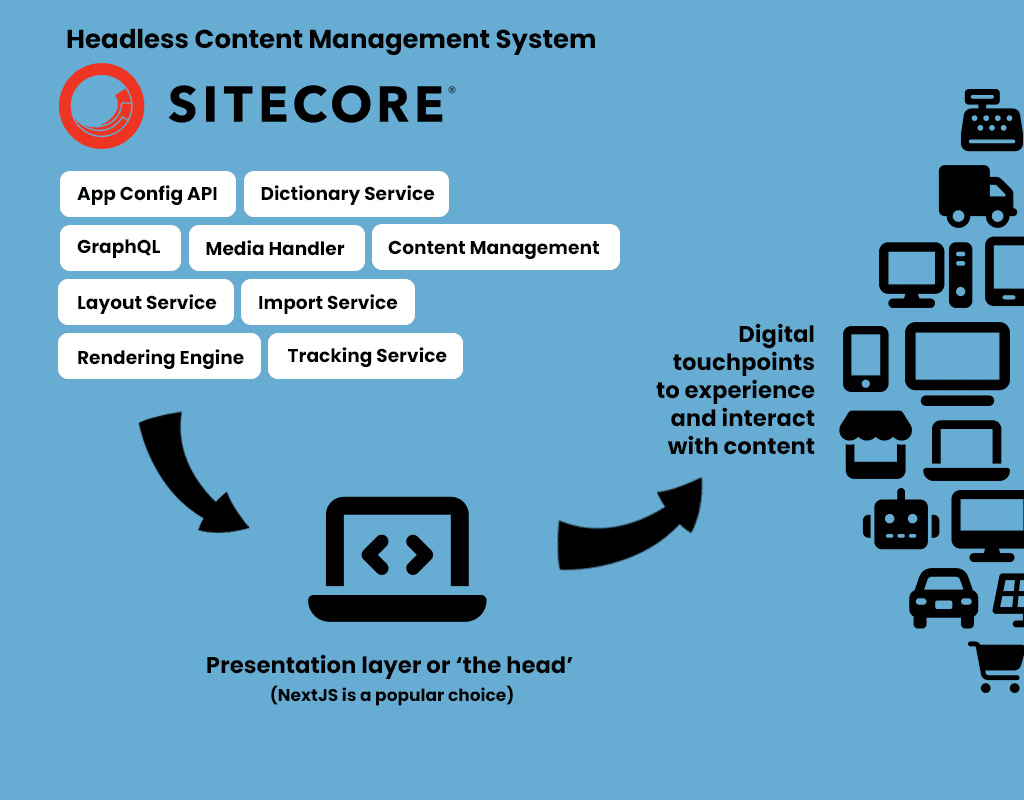A quick primer on Sitecore’s Headless offering and what it is, why to use it, and how to use it. This isn’t a deep dive, but it will answer a few high level questions and prepare you for making a decision around whether or not you should implement a headless solution.
Q: What is Headless?
A: The separation of the front end user interface and the back end layer of services.

It’s basically a content management system without an integrated front end. The ‘head’ in a headless setup is whatever front end the development team chooses.
Q: Why would you want a Headless content management system?
A: For easier integration of data with different user facing experiences. For example, if you wanted to manage the content for a website, a mobile app, and a product sales and inventory management tool without having to utilize separate systems.
Q: How do you go about implementing a headless solution with Sitecore?
A: Think about what you want to build and what your product roadmap will look like. From there, determine which back end services are necessary to support your product(s). Then determine which technologies are needed to receive data from those services on the front end, like React Native for a mobile app, NextJS for a website, .NET for your product sales and inventory tool.
More resources on the Headless option from Sitecore:
- What is a Headless CMS? – sitecore.com
- The freedom of Headless – sitecore.com
- What marketers should know about headless CMS – sitecore.com
From the perspective of this user interface developer, I think going headless is great. However, I don’t think it is a good fit for every situation. It really depends on your team’s skill sets, what kind of digital products you’re trying to build, and where you’re at in the development lifecycle. It’s a new paradigm gaining popularity but implementing some features (that already work well with your traditional CMS) may be poorly supported or overly complex to implement. Whether or not a headless CMS would benefit you depends on your needs and expectations so it’s important to do your research.
